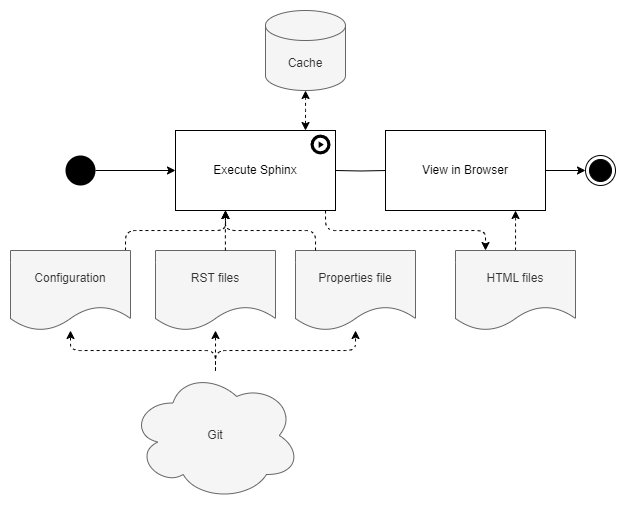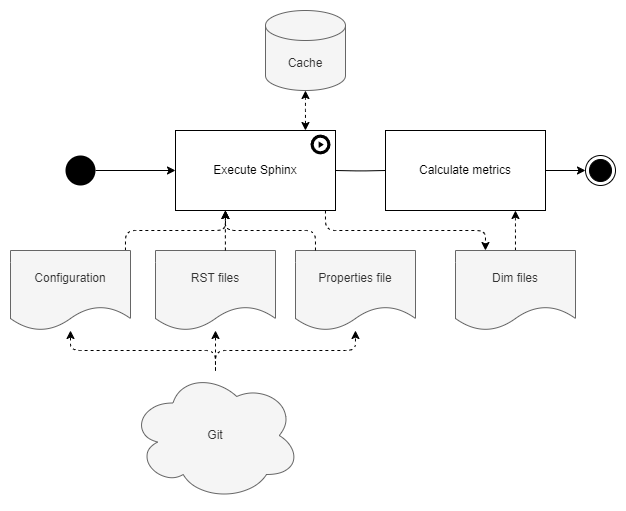Use Cases
This page shows how dox_trace is used from a black box perspective.
Generating HTML
Existing RST files including specifications are converted to HTML by executing Sphinx. The resulting HTML files can then be viewed in a browser.

Fig. 2 Generating HTML
Calculating Metrics
Specifications in existing RST files are exported to Dim format by executing Sphinx. With Dim files various metrics can be calculated using the Dim Ruby API.
It’s explicitly allowed to process the Dim files for any other purpose, not only for calculating metrics.

Fig. 3 Calculating metrics
Changing Specifications
RST files are text files, which can be changed by any editor. This requires to verify the changes:
Most of the errors like using an unknown attribute or cyclic references can be found by executing Sphinx and checking the exit code and if necessary the console output.
The values of the attributes can be syntactically verified by exporting to Dim format and running the Dim checks.
The generated HTML can be used to double check that the content is semantically correct.

Fig. 4 Change specifications
Publishing Changes
This is similar to the Changing Specifications use case. Instead of a local verification and a self-review, the changes are pushed to a code review tool to trigger an official verifier and let others review the changes. If both is successfully completed, the changes are merged into the corresponding Git branches.

Fig. 5 Publishing changes